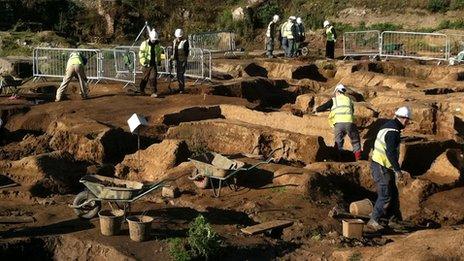York twinned with Viking city Jorvik
- Published
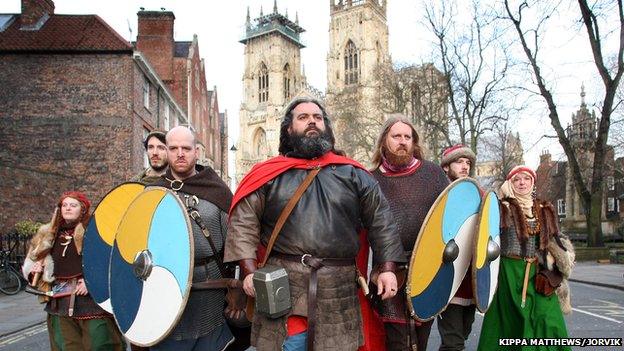
The extent of York's Viking past was revealed during an archaeological dig on Coppergate - now the site of Jorvik Viking Museum - in the 1970s
York is the first city in the world to be "twinned" with its historical predecessor - the 10th century Viking settlement Jorvik.
The city's Norse history was revealed in the 1970s when an archaeological dig at Coppergate found Viking streets several metres below the pavement.
York Archaeological Trust opened Jorvik Viking Centre in 1984 on the site.
The twinning is said to mark the "continuing cultural exchange" between York and Jorvik.
Jorvik Viking Centre, which has had 17 million visitors since it opened 30 years ago, depicts daily life in the 10th Century Viking settlement.
Sarah Maltby, of York Archaeological Trust, which owns Jorvik, said little was known about the North Yorkshire city's Norse history before the famous Coppergate dig.

York's Roman and Viking past
York was settled by the Romans in the first century AD
It was known as Eboracum and hosted a Roman military barracks
The Vikings settled in Jorvik from 866-1066
The Viking people remained even after the last Viking king, Harald Hardrada, was killed at the Battle of Stamford Bridge near York in September 1066

She said part of the museum's popularity was how it "immerses visitors in a completely different culture, with the sights, sounds and even smells of a bygone age".
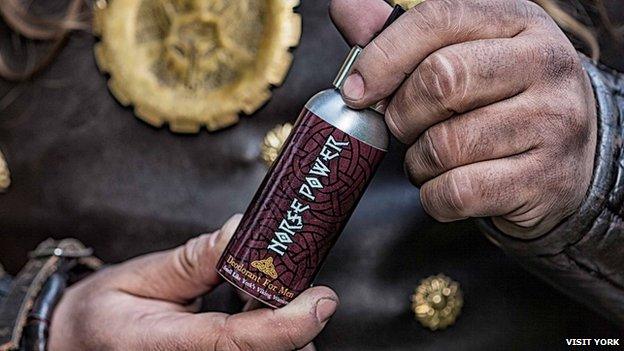
Visit York created a deodorant called Norse Power to "capture the aroma of Viking-era York with battle gore, sweat, pine, meat, mead, seawater and smoke"
The twinning will raise the profile of the "peaceful settlements and international trade links" of the Vikings, as well as the stereotype of a culture recognised for brutal pillaging.
Many York street names have Viking origins, including Coppergate which is derived from the Old Norse "Street of the Cup Maker".
Street layouts also follow Viking property boundaries which date back 1,000 years.
Other strangely-twinned cities include Swindon with Walt Disney World in Florida, and Wincanton in Somerset twinned with Terry Pratchett's fictional city of Ankh-Morpork.
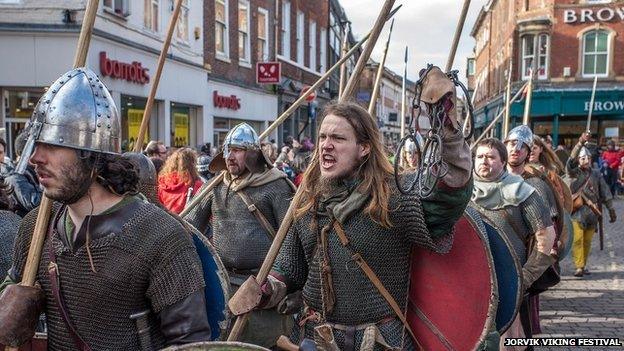
Jorvik Viking Festival each February is said to be the largest Viking Festival in Europe, with regularly upwards of 40,000 visitors
- Published21 July 2012
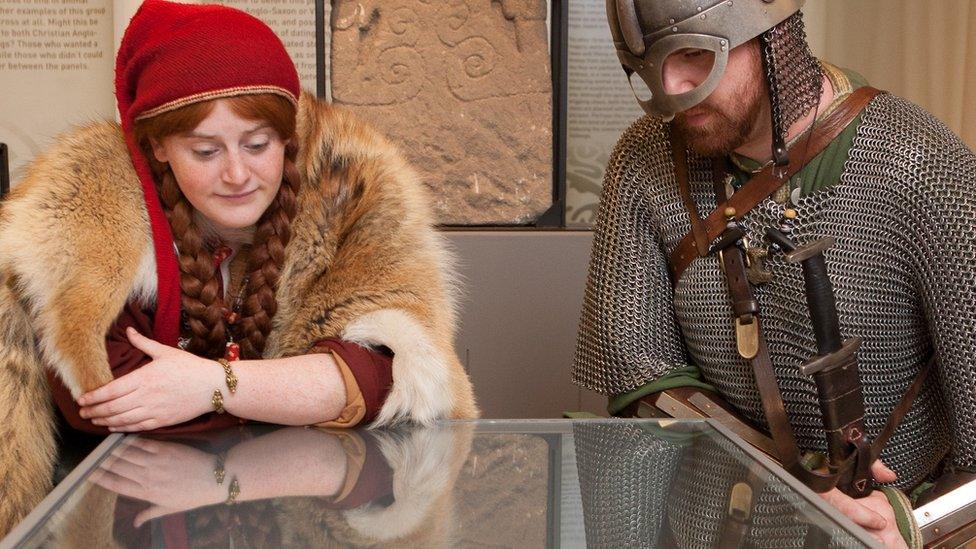
- Published21 October 2011
